

Uh oh...
It appears that you're using a severely outdated version of Safari on Windows. Many features won't work correctly, and functionality can't be guaranteed. Please try viewing this website in Edge, Mozilla, Chrome, or another modern browser. Sorry for any inconvenience this may have caused!
Read More about this safari issue.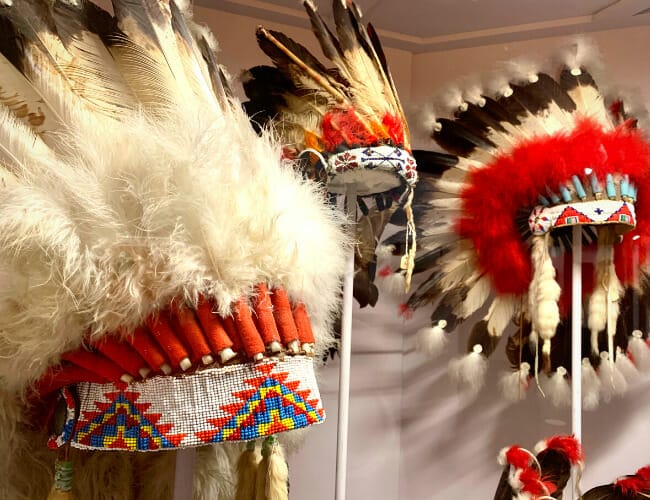

November opens the celebration of Native American Heritage month. Arkansas has deep roots with several Native American tribes, including Quapaw, Caddo, and Osage. November is a great time to explore this history, learn from the past and continue to increase our understanding of the Indigenous people who first called Arkansas home.

14 Places to explore Native American Heritage in Arkansas
- Your local county museum – most counties in Arkansas have a local history museum. For most, that includes a section of Native American pottery and farming tools used and created by the first inhabitants. Knowing about these Indigenous citizens can bring about gratitude and awareness for how they protected and preserved the land where you live.
- Museum of Native American Heritage | Bentonville – MONAH is the best spot in Arkansas to explore Native American history. Collections of pottery, traditional feathered headdresses, moccasins, farming tools, art, and even a gigantic mammoth skeleton, tell the story of multiple tribes and their ancestral presence in Arkansas.
- Toltec Mounds Archeological State Park | Scott – A National Historic Landmark preserving the Plum Bayou people’s ritual grounds and social gathering space.
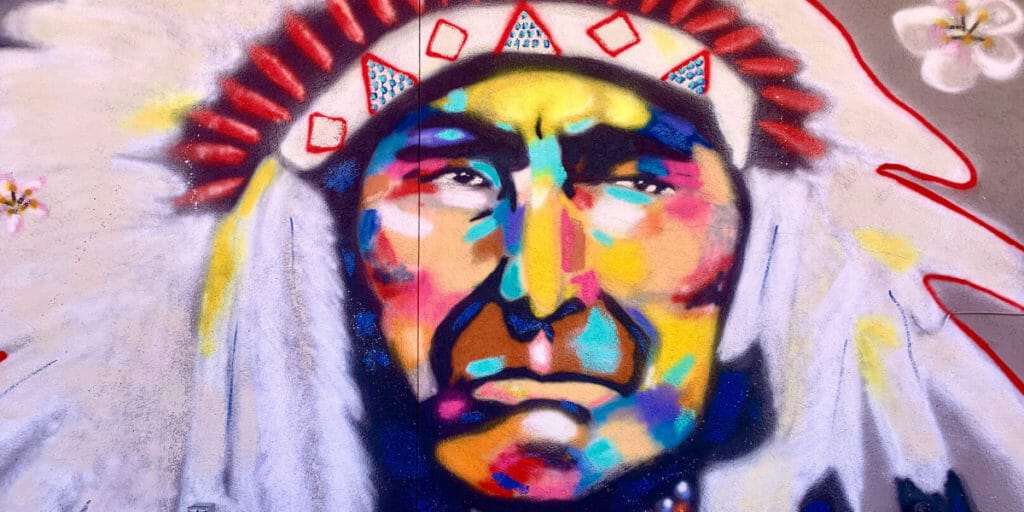
- Hampson Archeological Museum State Park | Wilson – a notable and award-winning collection of Nodena artifacts from a tribe living in the horseshoe bend of the Mississippi River from 1400-1600 AD. Displays interpret the life of these aboriginal people as farmers and cultivators of the land that makes up Mississippi County.
- Parkin Archeological State Park | Parkin – initially discovered by Spanish explorer Hernando de Soto, the park preserves the original village of the Casqui people.
- Ka-do-ha Village | Murphreesboro – a Caddo Indian burial ground and ritual site. Neolithic and Mississippian period pottery, a digging area, and touring the dirt mounds are highlights of the visit. In the American Indian oral tradition, stories were long told about the Spring so many on that route knew to stop at Blue Spring for hope and healing on a journey with impossible odds.
- Blue Springs Heritage Center | Eureka Springs – a sacred oasis for the Cherokee people during the Trail of Tears, the site was originally a trading post area for the Osage. A bluff rock formation provided shelter near the healing waters of the blue spring, where inhabitants began an onsite tradition of stone stacking formations.
- Arkansas Post National Historic Site | Gillet – Henri de Tonti established a fur trading post at Osotouy, a Quapaw village at the mouth of the Arkansas River and the site of the first encounter of Europeans and Native Americans in Arkansas.
- Hot Springs National Park | Hot Springs – Dating back 3,000 years, five different tribes climbed these hills in search of Arkansas whetstone, making it America’s oldest National Park.
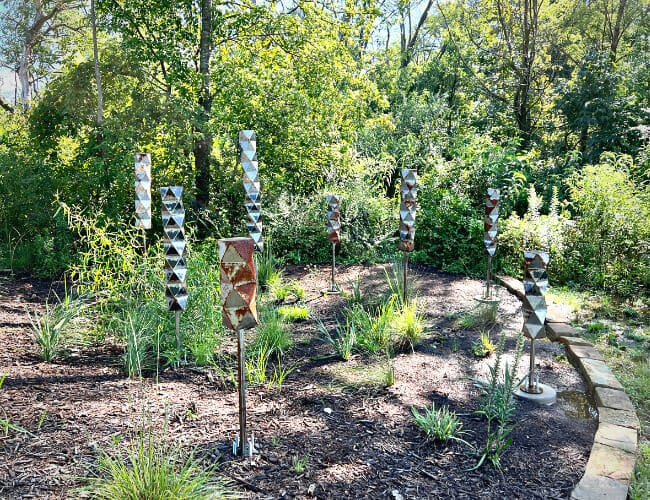
- Osage Park | Bentonville – a Northwest Arkansas hidden gem near Thaden field. Peel Compton Foundation operates the park under a preservation mode to reinstate natural areas for wildlife and wildflowers.
- Sequoya National Research Center | Little Rock – Named for an Arkansas Cherokee leader who developed the Cherokee alphabet, the center holds the most extensive collection of Native American expressions worldwide, including newspapers, art, poetry and history books.
- Saracen Casino Resort and Jefferson County Historical Museum | Pine Bluff – Quapaw artifacts and art depicting the story of Saracen, a Quapaw Indian appointed by Arkansas to negotiate for land and lead a movement to rescue white children from the Chickasaw Indians; a mural downtown visually tells this story.
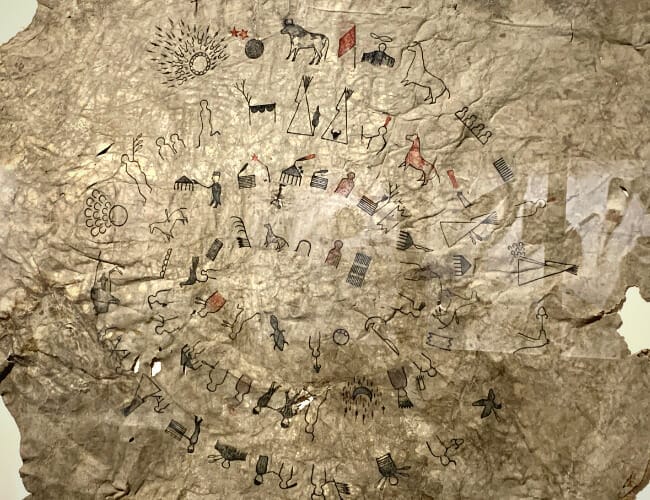
- Petit Jean State Park | Morrilton – Some scholars speculate that the plateau of Petit Jean mountain was a sacred area and grand temple mound. But no one can deny that the petroglyphs share an ancient message.
- War Eagle Cavern | Rogers – rock drawings and burn marks along the entrance of the cave leave behind evidence that this site served as a bluff shelter. Today nearly 75,000 pipistrelle and grey bats call the cavern home.
7 Significant Locations in the History of the Trail of Tears in Arkansas
- Trail of Tears National Historic Trail | across the state – the Trail of Tears refers to the forced removal of Native American tribes due to the Indian Removal Act of 1830. All five major tribes were forced to land west of Arkansas; therefore, three main routes, including ⅓ of the Benge and Bell routes, cross through Arkansas.

- Fort Smith Historic Site | Fort Smith – This National Park site marks the end of the Trail of Tears, where Native American tribes crossed over the Arkansas and Poteau rivers into “Indian Territory.”
- Pea Ridge Battlefield | Pea Ridge – On Dec. 23, 1837, the first detachment of nearly 11,000 Cherokee people camped near the Elk Horn Tavern on the Ruddick farm. Additionally, a mounted rifles troop of Cherokees, under the command of Stand Watie, participated in the battle.
- Historic Washington State Park | Washington – An original section of the Trail of Tears passes along the Old Military Route and Historic Southwest Trail used primarily during the early settlement of Arkansas following the Louisiana Purchase.
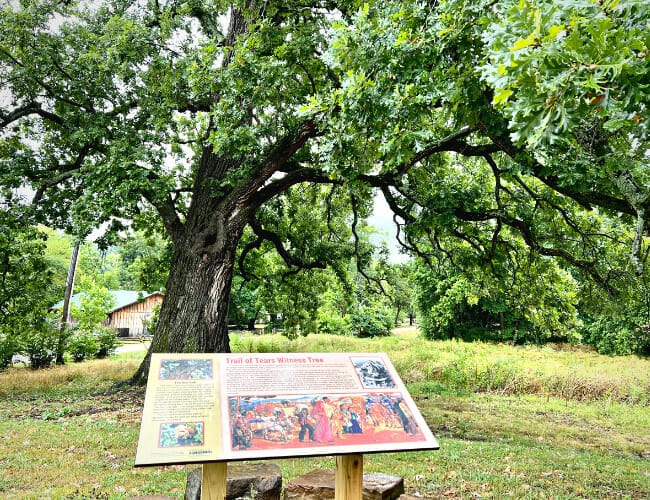
- Witness Tree | Cane Hill – due to its size and age, this tree is believed to have witnessed the march of Cherokee Indians through Cane Hill 183 years ago, serving as a landmark and distance indicator.
- Lake Dardanelle State Park | Russellville & Dardanelle – the village of Norristown served as a safe place for tribes to cross the river on a southbound route toward Fort Gibson, with some seeking guidance at the Choctaw Agency in Scullyville.
- Village Creek State Park | Wynne – Village Creek hosts the most extensive section of remaining intact trail, but poor road conditions with muddy paths and swamps made this trip challenging. Cherokee, Creek, Choctaw, and Chickasaw used this path as they moved closer to the new Indian Territory.
These sites are sometimes hard to explore but connecting our stories to the storied history of the area around us is vital. Where have you found Native American stories in your section of Arkansas?
Join the Conversation
Leave a Comment
4 responses to “Native American Heritage Stops in Arkansas”
 Leave a Reply
Leave a Reply
We do the work.
You check your email.
Sign up for our weekly e-news.
Get stories sent straight to your inbox!












 Leave a Reply
Leave a Reply
[…] Native American Heritage Stops in Arkansas […]
[…] Native American Heritage Stops in Arkansas […]
[…] Nestled in the charming town of Bentonville, Arkansas, the Museum of Native American History (MONAH) offers a rich and immersive experience into the culture, history, and contributions of Native American communities across the United States. This hidden gem, located in the heart of the Ozarks, is a must-visit destination for anyone interested in understanding indigenous peoples’ diverse and profound legacies and is a highlighted heritage center in Arkansas. […]
[…] Pottery and baskets – he likes to do crafts, and we were able to talk about how things we do as crafts for fun were a necessary part of everyday life for Native Americans […]